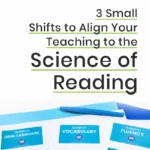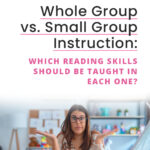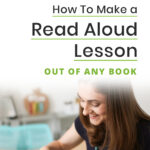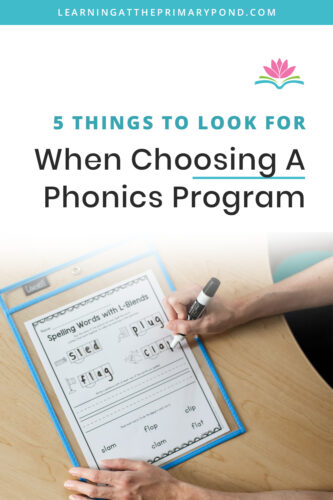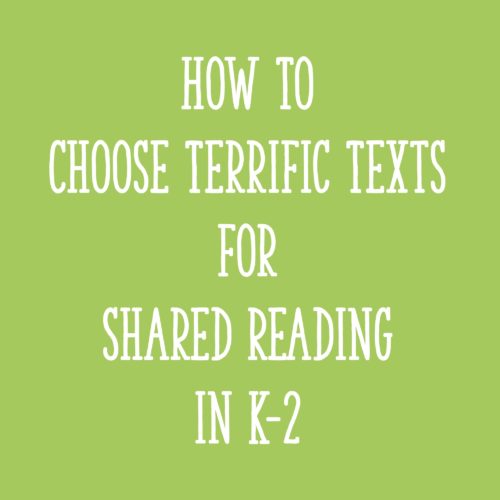Vocabulary is key to a student’s literacy success. When a student is reading a text, their comprehension of that text depends largely on their ability to understand the words in a text! Having a large vocabulary also strengthens a student’s writing and communication skills. And vocabulary knowledge is necessary for students to express their thoughts!
But you probably already know that vocabulary is important! The question, then, is: how do you get Kindergarten, 1st, and 2nd grade students to expand their vocabularies?
Before we dig in and address this question, I want to note that Beck and McKeown (2002) proposed that there are actually three tiers that vocabulary words can fall into. You may introduce and teach the different tiers of words differently.
- Tier One Words make up the majority of words that Kindergarten, 1st graders, and 2nd graders see while reading texts at their levels. Tier One words are most frequently used in the English language – words like “run” and “grass.” Students often learn these words through their everyday conversations.
- Tier Two Words are a bit more difficult. Students will come across them in texts and may need to use context clues to figure out what they mean. These words aren’t used as often in everyday conversations. The word “masterpiece,” for instance, would fall into this tier.
- Tier Three Words are found mostly in informational texts. They will not come up frequently in conversation. They are fairly specific to the topic in a book – a word such as “photosynthesis.”
In this blog post, I’m going to give you a step-by-step process of how I introduce words in a small group setting to students. (If you want to read more about teaching vocabulary in a whole group, shared reading setting, here’s a blog I wrote entitled “How to Teach Vocabulary During Shared Reading in K-2.”)
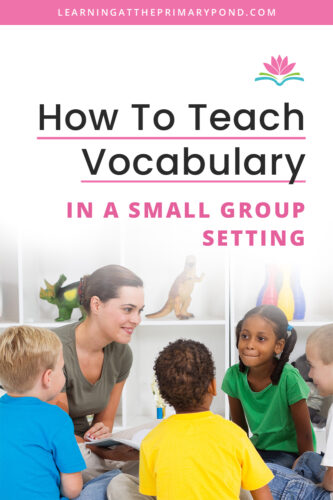
Step by Step Process
First and foremost, it’s important to pick texts and passages that include new vocabulary for students. I know there are tons of other things to consider when choosing texts, but make sure you don’t forget about the vocabulary component!
This step-by-step process works well for teaching new words in a small group setting, but it’s not the only way you can go about this! If you’re teaching students how to figure out the meaning of new words through context, for instance, you wouldn’t want to take these steps laid out.
Here’s an example from my Kindergarten Literacy Club materials. This is a card that you would have printed and ready to show your students:
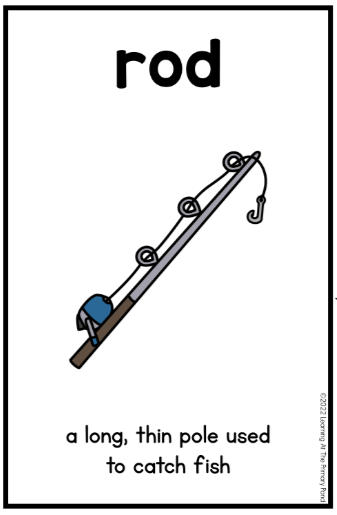
- Show students the word card and say: “This is the word ‘rod.’ Repeat the word. (rod). Good!”
- Provide the definition: “This rod is a long, thin pole that is used to catch fish, like what you see in the picture here. A rod can also be a pole that is used to hold curtains. But if we’re talking about a fishing pole, the rod has a line and a hook at the end. You can use a rod to catch fish, look at them, and then put them back in the water. You could catch a red fish with a rod. You could catch a blue fish with a rod. You could even catch a rainbow fish with a rod.”
- Give a question/sentence stem to probe background knowledge: “What kind of fish could you catch with a rod?” Have students use the sentence frame, “I can catch a ___________ fish with a rod.” You can write this sentence frame on a sentence strip, whiteboard, or piece of chart paper.
- Have students share their answer: You can have students share their sentence aloud to the group, or you can have students say their sentence to a partner as you listen to their responses.
- Find it in context: Then have students find and read the word “rod” in the text. As students read the text, independently or as a group, have them stop and discuss the vocabulary word when they come to it in the text.
Here’s another example from my 1st and 2nd Grade Literacy Club resources (as you can see, it’s a very similar process!):
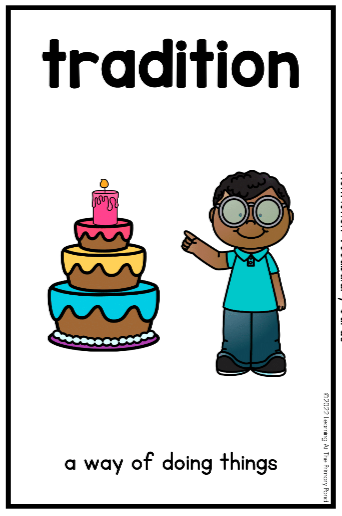
- Show students the word card and have them repeat: “This is the word ‘tradition.’ Repeat the word. (tradition). Good!”
- Provide the definition: “A tradition is a way of doing things. For example, it is tradition for some families to watch fireworks on the fourth of July. This picture shows a boy who is celebrating his birthday. In this boy’s family, it is tradition to have a party with a big cake and candles on your birthday. Some families have vacation traditions, such as going to the beach every year. Some families pass down special items as a tradition. For example, a dad might give his son his lucky watch, and that watch belonged to his own dad.”
- Give a question/sentence stem to probe background knowledge: “What is a tradition that your family has?” Have students use the sentence frame, “A tradition in my family is ___________.” You can write this sentence frame on a sentence strip, whiteboard, or piece of chart paper.
- Have students share their answer: You can have students share their sentence aloud to the group, or you can have students say their sentence to a partner as you listen to their responses.
- Find it in context: Then have students find and read the word “tradition” in the text. As students read the text, independently or as a group, have them stop and discuss the vocabulary word when they come to it in the text.
With both of these examples, having a visual card to show students really helps. By doing this type of pre-work ahead of time, students are able to understand this discussed vocabulary when they see it in the context of the passage. This helps their comprehension!
Conclusion
Vocabulary acquisition for students is incredibly important as texts get more complex. They can use their knowledge from reading to transfer it to their writing, too.
If you’re looking for small group resources that already have texts with vocabulary, as well as vocabulary cards, lesson plans, and additional center materials, click here to learn more about the Kindergarten Literacy Club and click here for the 1st and 2nd Grade Literacy Club. If you’re not already a member, you can join the waitlist today!
Happy teaching!

